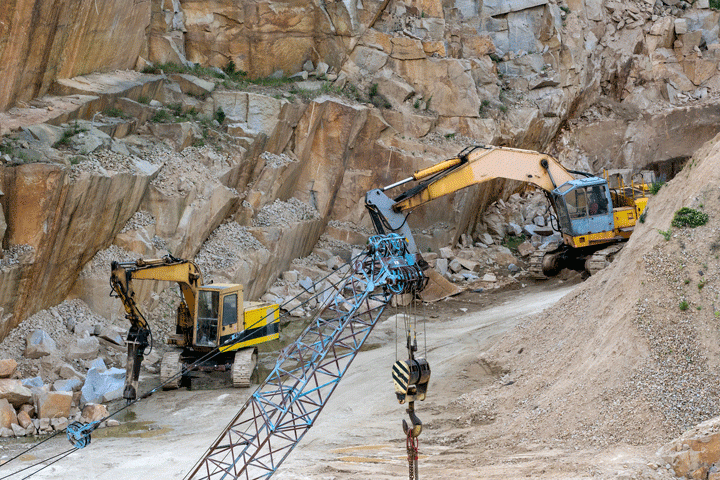Unveiling Granite Quarries in South Africa Legacy: A Journey Through Quarries
Unveiling Granite Quarries in South Africa Legacy: A Journey Through Quarries
Blog Article
Uncovering the Rich Background and Sustainable Practices of Granite Quarrying
As we depend on the precipice of revealing the complex tapestry of granite quarrying, a journey with time reveals not simply the physical act of extracting rock yet additionally the cultural and historic significance woven into the extremely fabric of this practice. From the old origins that laid the structure for modern quarrying methods to the sustainable practices that are shaping the future of this sector, each chisel mark on granite surfaces informs a tale waiting to be unearthed (granite quarries in south africa). The tradition of granite quarrying extends far beyond simple removal; it is a testament to human resourcefulness, resilience, and the enduring appeal of this marvelous rock
Ancient Beginnings of Granite Quarrying
Going back to old civilizations, the method of quarrying granite has been an integral part of human history and architectural improvement. The earliest proof of granite quarrying dates back to old Egypt, where huge pyramids and detailed sculptures were crafted from this durable stone. The Egyptians used primitive tools to draw out granite blocks from quarries, showcasing the importance of this material in their significant buildings.
Moving on in history, the Greeks also made significant contributions to the quarrying of granite. The Greeks used granite in various architectural marvels, such as temples and statues, demonstrating their skill in shaping and carving this sturdy rock. The Romans better refined the techniques of quarrying granite, using innovative tools like chisels and hammers to essence and form granite for their famous frameworks.
Via the centuries, the technique of quarrying granite has actually progressed, with contemporary innovations boosting effectiveness while preserving the timeless appeal of this natural stone - granite quarries in south africa. From ancient worlds to contemporary home builders, the tradition of granite quarrying remains to form our globe
Development of Quarrying Methods
The development of quarrying techniques has actually been noted by a constant progression towards better effectiveness and precision in drawing out granite. From the rudimentary approaches utilized by our ancestors to the innovative innovations utilized in modern-day quarrying operations, the industry has actually gone through significant developments. Early quarrying techniques entailed hands-on labor with basic devices such as blades, hammers, and wedges to draw out granite blocks from the planet. As people advanced, techniques like fire-setting and primitive dynamites were introduced to promote the extraction process.
In even more recent times, the arrival of machinery changed the quarrying market, making it possible for faster removal rates and raised efficiency. Technologies such as ruby cord saws, high-pressure water jets, and pneumatic drills have actually ended up being basic in modern-day quarries, enabling accurate cutting and lowered waste. Innovations in computer-controlled equipment and 3D modeling have optimized click this site quarrying procedures, leading to minimal environmental impact and improved sustainability practices. As the demand for granite continues to increase, the development of quarrying techniques remains essential to meeting market requires effectively and sustainably.
Social Relevance of Granite
Granite holds an extensive social importance across different worlds because of its enduring visibility in building work of arts and prized monoliths. From the majestic pyramids of Egypt to the intricate carvings of the Angkor Wat temple in Cambodia, granite has been a material of selection for sharing magnificence and durability in social heritage. In old Rome, granite columns embellished temples and public structures, signifying strength and permanence. The cultural importance of granite prolongs beyond its physical qualities; it symbolizes durability, security, and timelessness, making it an icon of withstanding traditions and traditions.

Sustainable Practices in Quarrying
Amidst the abundant history of granite quarrying and its cultural value lies a growing focus on lasting techniques within the market. As environmental recognition and worries about source depletion have actually increased worldwide, the quarrying sector has actually progressively accepted sustainable techniques to decrease its impact on the environment and bordering communities.

Moreover, reclamation and click for more rehab of quarry sites post-extraction are important to lasting methods. By bring back quarried areas to a natural or beneficial state, such as creating wild animals environments or entertainment areas, quarriers can balance out the environmental footprint of their procedures and add favorably to the regional community.
Legacy of Granite Quarrying
With a historic background steeped in craftsmanship and commercial development, what withstanding impact has granite quarrying left on the landscape of contemporary culture? The tradition of granite quarrying transcends mere removal methods; it has shaped building wonders, metropolitan landscapes, and social heritage worldwide. The long lasting nature of granite has made it a preferred option for monuments, buildings, and framework, standing as a More Help testimony to the skill and artistry of quarry employees across generations.
In addition, the economic footprint of granite quarrying can not be forgotten. The market remains to offer job opportunity and drive regional economic climates in regions where granite removal prevails. It has additionally spurred technological innovations in quarrying methods and tools, causing much more efficient and lasting practices.
In regards to sustainability, the legacy of granite quarrying consists of initiatives to reduce ecological impacts through improvement tasks and responsible resource monitoring. By balancing economic rate of interests with ecological stewardship, the sector strives to ensure that future generations can remain to benefit from this enduring natural resource.
Verdict

Report this page